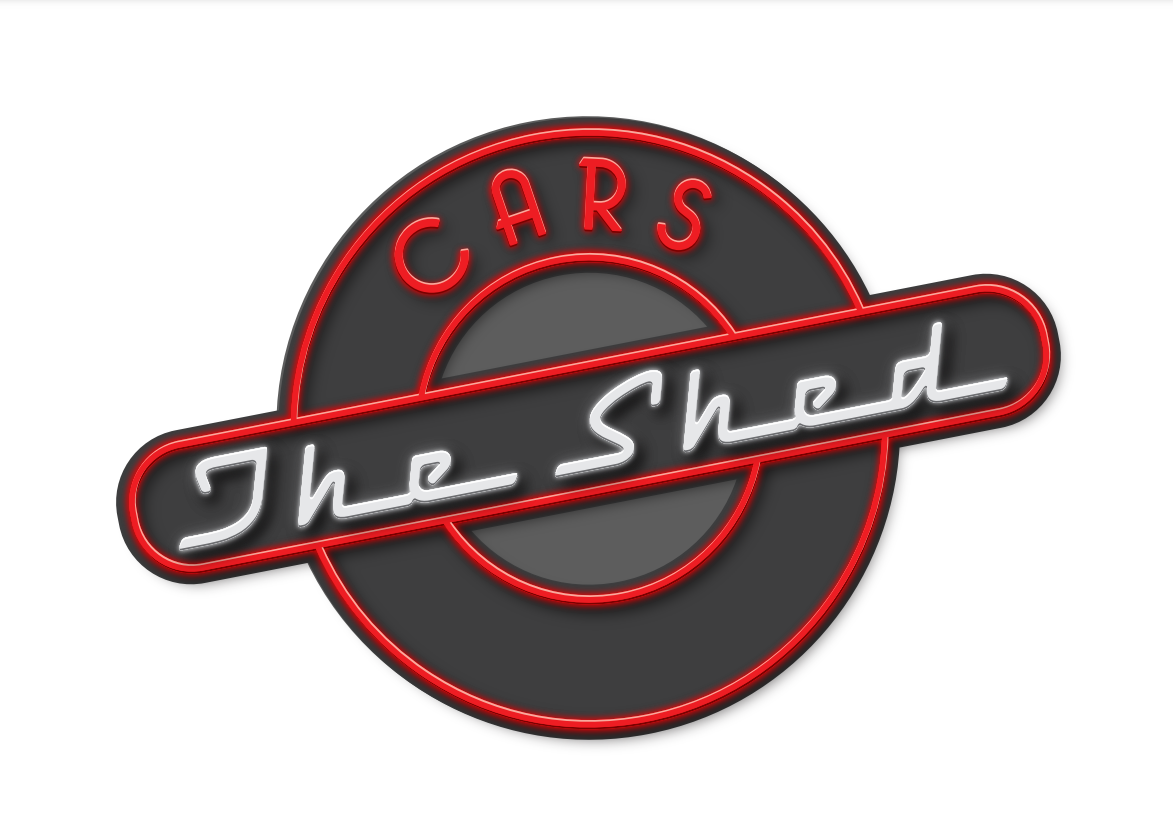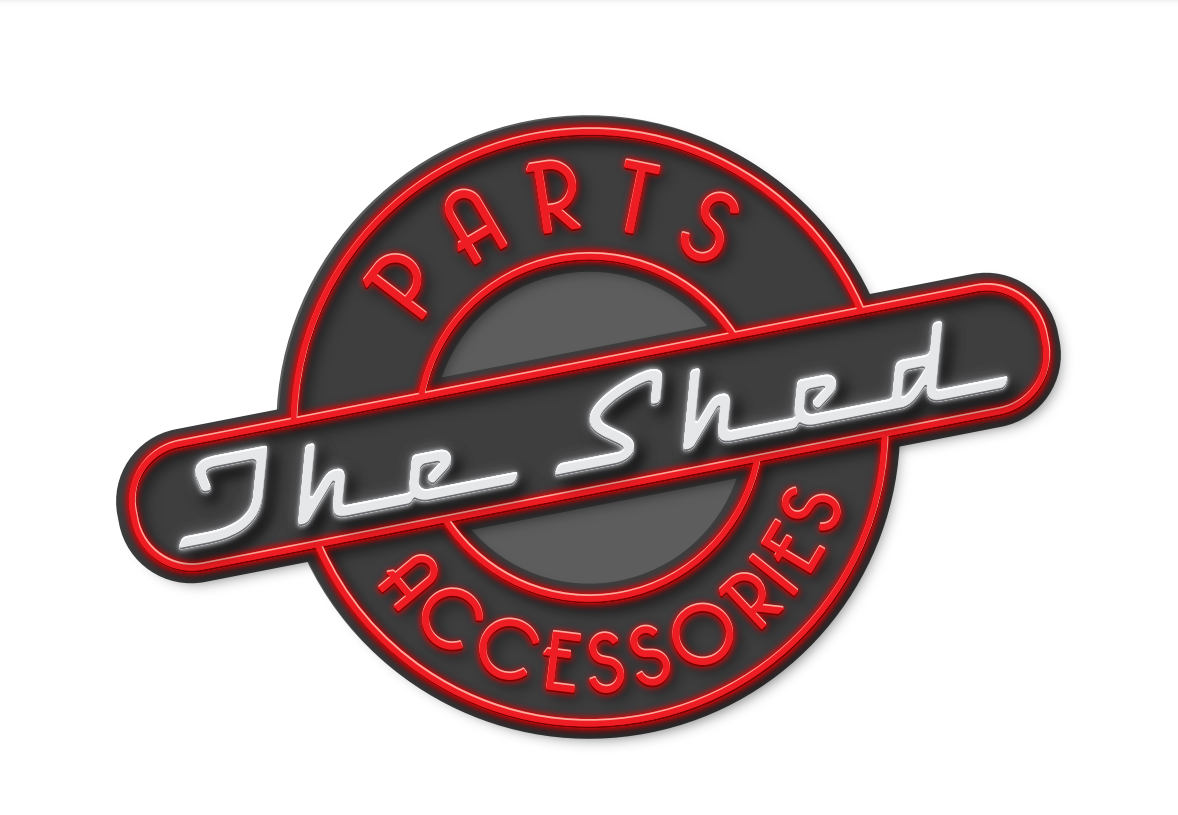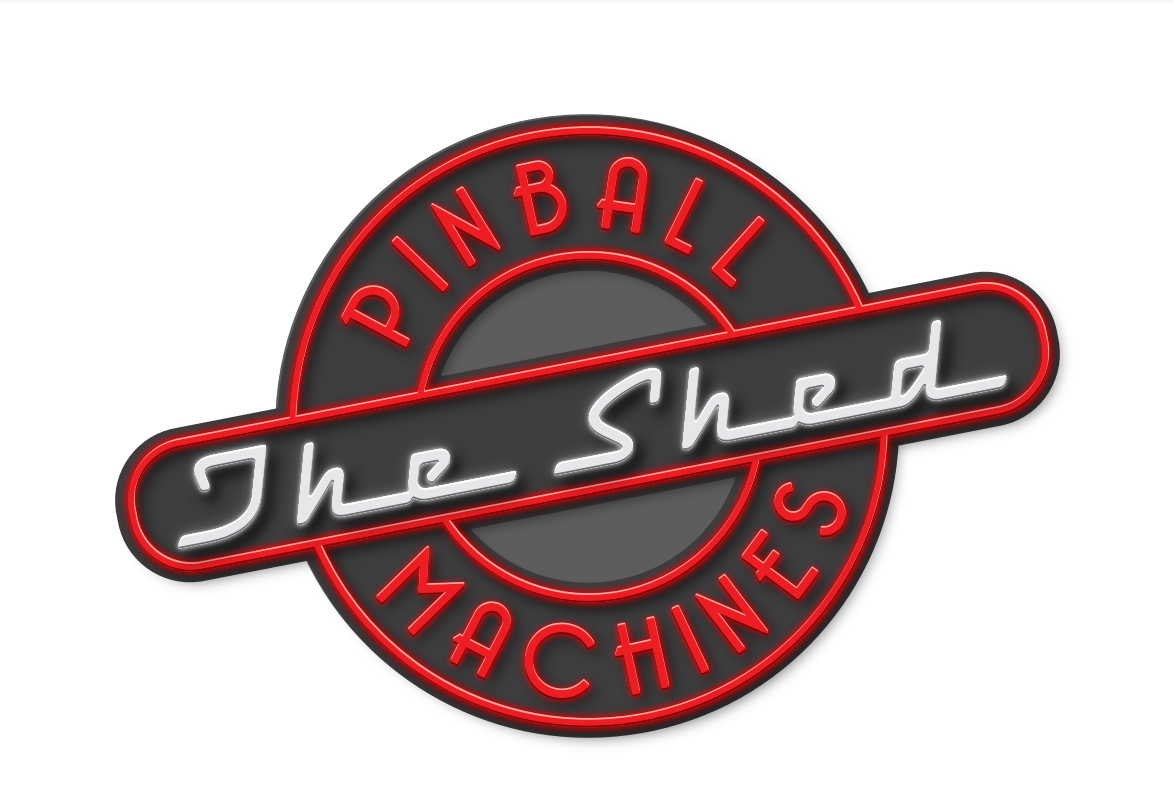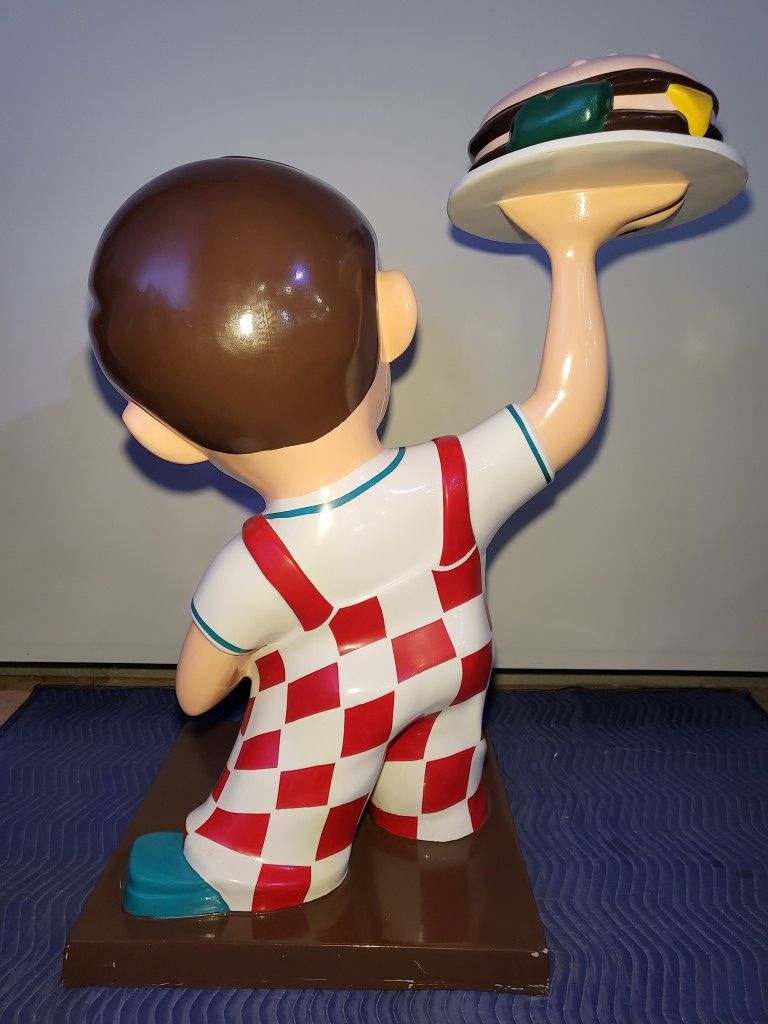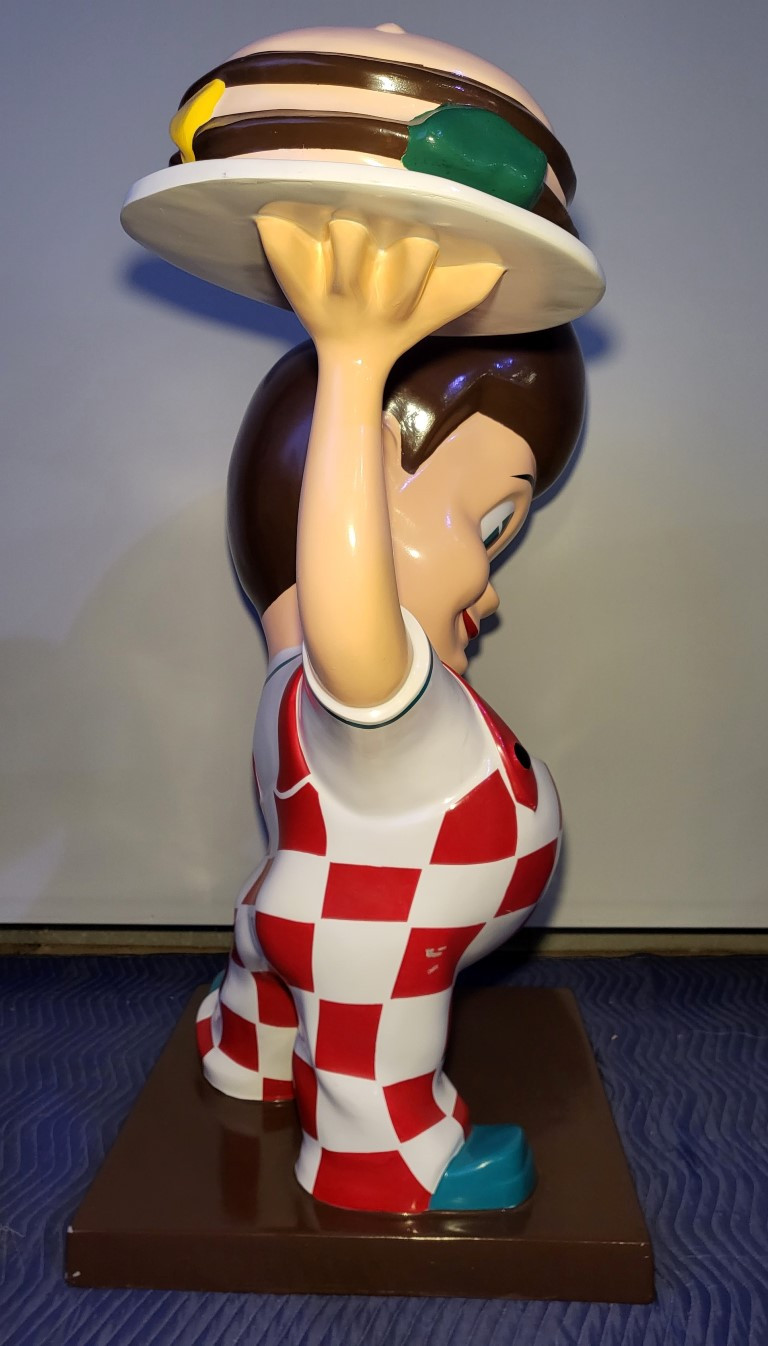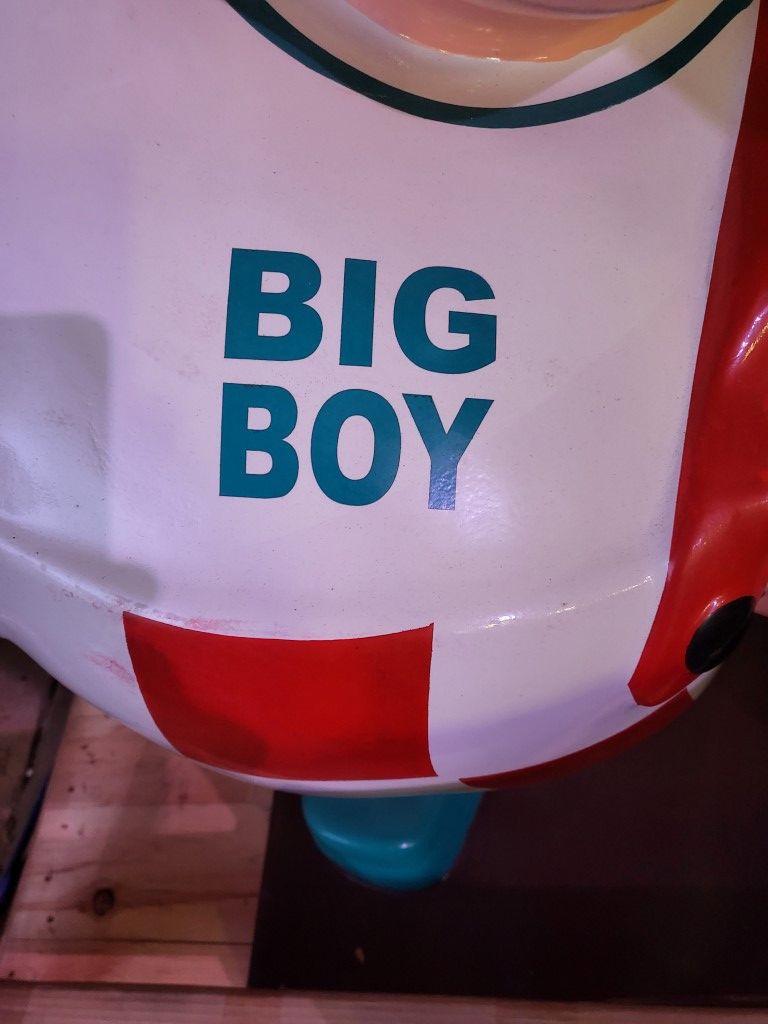Bob's Big Boy Statue
Bob’s Big Boy Statue
A fast-food icon for your game room or garage
Entrepreneurship flourished in the 1930s. The Great Depression threw nearly a quarter of Americans out of work. With little in the way of conventional opportunity available, Americans scraped together what they could and went into business for themselves. Many of the iconic images of roadside Americana come out of this period: drive-in movies, miniature golf, gas stations, and drive-in restaurants sprung up from coast to coast in an effort to squeeze some income from passing motorists.
Bob Wian, of Glendale, California, was the founder of one such business. In 1936, Wian was a fry cook who found himself with the opportunity to purchase his own restaurant. It meant selling his prized De Soto roadster, but, if he played his cards right, it would also mean the chance to secure his financial future. He named his newly acquired lunch stand Bob's Pantry, and applied the lessons he had been studying for the past three years to make his new venture a success.
Luck often plays as much a role in success as skill, however, and Bob's Pantry was no exception. A young lad named Richard Woodruff liked to hang around the restaurant. On his seeing the cherubic youngster, Bob always greeted him with a cheerful "Hello, big boy!" A longtime friend of Bob's, Warner Brothers animator Bennie Washam, sketched a cartoon of the "big boy" and Bob made him the mascot of Bob's Pantry.
Because the restaurant was open late, it attracted a clientele of musicians finishing up sets at local night clubs. It was one of those patrons who challenged Bob to come up with something new for the menu—virtually everything else having been adopted from one of the restaurants at which Bob had worked previously. In return, Bob created a double-decker hamburger topped with two slices of cheese and his signature red relish. The result was a success and became a regular part of the menu called, you guessed it, the Big Boy.
Soon, Bob's Pantry was known to the community as Bob's Big Boy. As a Pig Stand alum (see Hemmings Classic Car #161), Bob was familiar with the eat-in-car idea that was sweeping the nation in the 1930s. He adopted curb service at his original stand, and opened a second drive-in location in Burbank, California, in 1938. Before the start of World War II, Bob had four Big Boys in operation.
The Muroc crowd, with their hopped-up early Fords, liked to hang around drive-in eateries. Their haunts were places like The Frying Pan and the Twin Barrels, but their post-war successors would flock to Bob's Big Boy locations, making the chain a SoCal cruising icon.
The Big Boy name (minus "Bob's," which is mostly identified with the California locations) began spreading nationwide in 1946. Franchisees like Dave Frisch, in Ohio, the Elias Brothers, in Michigan, and Alex "Shoney" Schoenbaum, in West Virginia, popularized the double-decker hamburger and its chubby mascot from coast to coast. The Big Boy character was ready for an update in 1955. The somewhat slovenly original was given a fresh face, neater clothes, and a more streamlined appearance by designer Lucian Bernhard. It's this version that most people recognize today, thanks to its popularity as a statue outside restaurants, beckoning famished carloads to enjoy the restaurant's eponymous sandwich and more.
Although most Big Boys aren't drive-ins any longer, the name remains inseparable from cruising culture. Even the company itself recognizes this, with the old Harvey's Broiler in Bellflower, California, rescued from partial demolition and reopened as a Big Boy just a few years ago.
Original article by David Conwill from Hemmings Motor News, September 2019

